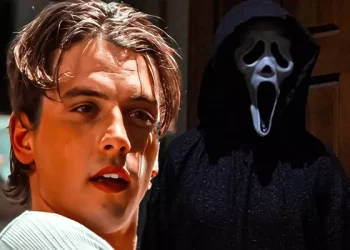“The Exorcist,” a landmark in the horror genre, continues to captivate audiences with its bone-chilling narrative and unparalleled fear-inducing elements. Released in 1973, this film has remained a staple in the realm of horror, prompting a lingering question: Why is The Exorcist so scary? From its psychological terror to its groundbreaking special effects, several factors contribute to the film’s enduring ability to terrify audiences across generations.
The Power of Belief: A Psychological Terror
At the core of “The Exorcist” lies the power of belief, infusing a psychological terror that transcends mere visual frights. The film delves into the theme of faith and the battle between good and evil, sparking a visceral fear that resonates deeply within viewers. The haunting portrayal of a young girl possessed by a demonic entity challenges the audience’s perception of reality, blurring the lines between the natural and supernatural. This existential dread taps into universal fears, making the storyline and its implications profoundly unsettling.
Unsettling Realism: The Documentary Style
One of the reasons why The Exorcist is so scary lies in its documentary-style approach. Director William Friedkin meticulously crafted the film to exude a sense of authenticity and realism. The use of dim lighting, grim settings, and handheld camera techniques creates an atmosphere that feels uncomfortably genuine. This grounded approach makes the supernatural elements all the more chilling, as they are presented in a manner that feels eerily plausible, intensifying the film’s impact on the audience.
Iconic Performances: Amplifying the Horror
The performances in The Exorcist play a pivotal role in amplifying its horror. Linda Blair’s portrayal of the possessed Regan remains a benchmark in horror cinema, showcasing a level of terror and vulnerability that is both mesmerizing and petrifying. Max von Sydow’s portrayal of Father Merrin exudes a profound gravitas, adding depth to the battle against the demonic forces. The conviction and authenticity conveyed by the cast contribute significantly to the film’s ability to evoke fear in its audience.
See Also: Unraveling Cinematic Fear: What Was the First Horror Movie?
Sound Design: Crafting Fear Through Audio
The Exorcist’s spine-tingling sound design is a crucial element that intensifies its frightening impact. The use of eerie, discordant noises and unsettling sounds creates an unsettling ambiance, building tension and anticipation throughout the film. From the ominous whispers to the bone-chilling growls, the auditory experience in The Exorcist plays a pivotal role in evoking fear, often lingering in the minds of viewers long after the credits roll.
Taboo Themes: Exploring Uncomfortable Realities
The film’s exploration of taboo themes adds another layer to why The Exorcist is so scary. The subject matter, including possession, blasphemy, and the corruption of innocence, taps into societal fears and challenges deeply ingrained beliefs. By confronting these uncomfortable realities head-on, the film pushes the boundaries of horror, forcing audiences to confront their own fears and vulnerabilities, thus heightening the overall terror of the narrative.
Impactful Visual Effects: Defying Expectations
The groundbreaking visual effects of The Exorcist revolutionized the horror genre. The contortions of Regan’s body, the grotesque makeup, and the visceral transformations were unprecedented for their time. These effects, coupled with practical makeup and ingenious camera tricks, defied audience expectations, creating a horrifying spectacle that shocked and terrified viewers in the 1970s and continues to unsettle audiences today.
Cultural and Religious Context: Amplifying Fear
The Exorcist’s incorporation of cultural and religious elements further amplifies its fear factor. Drawing from Catholicism and ancient rituals, the film delves into the depths of religious beliefs and superstitions. The invocation of demonic entities and the portrayal of exorcism rituals strike a chord with audiences, regardless of their personal beliefs, as the film taps into primal fears ingrained in various cultures, making it universally haunting.
The Legacy of Fear: Enduring Impact
Decades after its release, The Exorcist continues to leave an indelible mark on the horror genre. Its influence can be seen in subsequent films, with many trying to replicate its terror-inducing elements. The film’s ability to terrify across generations speaks volumes about its lasting impact, solidifying its position as a timeless classic in the realm of horror cinema.
In conclusion
“The Exorcist” stands as a pinnacle of horror due to a myriad of factors that coalesce to create an unparalleled sense of fear. From its exploration of psychological terror to its groundbreaking effects and cultural implications, the film’s ability to unsettle audiences remains unmatched. As long as the question lingers – Why is The Exorcist so scary? – this cinematic masterpiece will continue to haunt and captivate audiences, reaffirming its status as an iconic and terrifying classic in the annals of horror cinema.
























